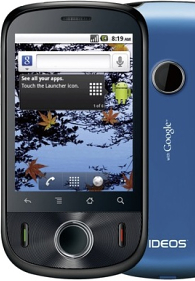
There are a few terrestrial and wireless ISPs in Kisumu – KDN, Africaonline, Orange Telkom and Swift Global spring to mind. I think a few more may arrive soon once the fibre optic cable installation marathon that’s currently under way here is finished.
Right now, I know a couple of people using Orange ADSL and a few others using KDN’s WIMAX. I only know a single person (through their business) using fibre but I think quite a few more homes and business may switch to fibre soon; maybe even more will move to wireless services from resellers. I’m pretty sure that far more people will start use mobile data over the same time frame though – coverage in Kenya is very good and the spread of mobile ownership continues apace – and there are a few drivers for mobile growth that are no where near exhausted yet.
Since I last lived here in 2007, there has been a noticeable influx of new, cheaper low- to mid-range phones to the market. Whereas before I saw high street shops full of second hand phones, today I see quite a lot more selling good looking branded phones from China such as Tecno – which has a broad range available here – as well as a Huawei and ZTE who also have a few products. There’s also a pretty high volume of KIRF stuff for sale here too. Lots of weird and wonderfully specced Noklas, Samesungs and the like.

Huawei’s IDEOS (android) phone has had a huge media push here of late, though it is still way, way out of the average person’s reach though at it’s current KSH7,999 price point. The Samsung brand seems to be going from strength to strength here and, as ever, Nokia has a big (though noticeably falling) high street presence.
Nearly all these companies offer mid level phones that have EDGE capability at least – some of them also have 3G (the cheapest one in Safaricom’s shop right now is KSH3,999). High level stuff is available here too – PhoneExpress have my Desire Z on sale – but the prices are as high as you’d expect with, for example, a Samsung Galaxy S (i9000) setting you back KSH42,999.
For a mobile 3G modem, prices range from KSH1,999 for the Huawei E173 to KSH12,199 for the Huawei E5 (which is a portable wifi hotspot) and most come with a bundle of free data.
As for mobile data coverage and pricing, there may not be much 3G outside of major towns just now, but EDGE seems to be almost everywhere else, at least in the parts of Nyanza, Western, Central and Coast I’ve traveled to in the last 9 months (including some very out of the way places around Lake Victoria here).
The end user cost is relatively low – standard unbundled MB price on Safaricom is currently KSH8 – and the bundled prices seem to be dropping all the time. The main players Safaricom, Orange and Airtel are cooking up new, lower-priced data bundles. There’s currently a new set of bundles being marketed by Safaricom as “affordable Internet for less”. These daily bundles are priced from 5MB for KSH5 up to 25MB for KSH20.
I’d say the number of Kenyan’s going online via mobile will continue to increase rapidly for a good while yet.
.
![]()














































